Hiking the Khongor Sand Dunes should be on every visitor to Gobi, Mongolia to-do list. The Gobi Sand Dunes go by many names to include: Khongor Sand Dunes, Khongoryn Els, and Singing Dunes.
When most people picture the Gobi Desert, this is the image that comes to mind. The massive sand dunes. It was actually common to think that this was the entire landscape of the Gobi. Even people in Mongolia (before computers) thought those visiting from Gobi lived in the sand dunes.
Actually, the sand dunes are only a small portion of the Gobi. The majority of it is a mixture of steppe, mountains, and then, of course, the sand dunes.
Overview
- Location: Gobi Desert, Mongolia
- Difficulty: Moderate to Difficult
- Time Needed: 1 to 2 hours.
How are Sand Dunes Made?
Sand dunes are formed by the wind blowing sand across a desert (sometimes beach). This sand will travel, until an obstruction prevents the wind from moving it further. In this case, the mountain range that surrounds the Khongor Sand Dunes.
From here the same is typically moving from the stoss side (the upward or windward side) and then moves over to the lee side or the downflow side. Ultimately the sand will move up one side, reach the peak, and then come down the other side where the sand typically remains due to further obstruction from the wind.
This is how what appears to be a random sand dune is in the middle of the Gobi desert surrounded by otherwise flat grasslands, and a mountain range.
What Makes the Khongor Sand Dunes the “Singing Dunes”?
Singing Dunes are actually quite common, and you will find many dunes around the world have adopted name adaptions to the sound that sand dunes are known to make, such as “Barking Dunes” and “Booming Dunes”.
The sound comes from the movement of the sand with a gust of wind. It can be caused by the progression of sand moving over the crest, or from an avalanche of the sand. The sound of the sand is said to be similar to whistling or barking.
The conditions have to be right for this to occur though, so do not expect that the sand dunes will always be producing the unique sound. Sometimes the win
d may just be too strong and you will be stuck in more of a sandstorm than listening to the sound of whistling sand.
Hiking the Khongor Sand Dunes
The best way to see the sand dunes in the Gobi Desert is to climb them. However, this will require a lot of physical exertion.
You know how walking on the beach, a flat surface, can be tiring after a while? Well, now imagine doing that for thirty minutes but at a very steep incline. That is what climbing the side of the Gobi Desert Sand Dunes is like.
The climbs start off gradual, winding up to the steeper slope. Then you will reach the base of the dune and begin the ascent. This is the difficult part. During portions of the climb, I was just using my hands and feet to climb as the incline is that steep.
Also, the climb involves no shoes.
At first, being told to remove my shoes surprised me, and then being told to remove my socks, but once you are about ankle-deep in sand the recommendation makes complete sense.
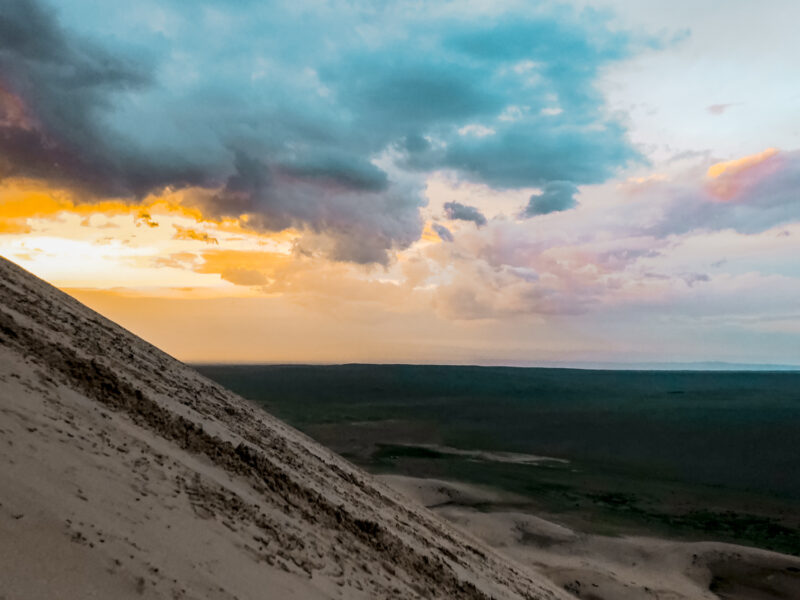
The climb up can take anywhere from thirty minutes to an hour depending on how quickly or in shape you are. The hardest part being the climb along the side of the dune.
However, once you reach the crest you are given beautiful views out over the entire Khongor Sand Dunes. The view is even better at sunset as the light illuminates the colors of the dunes.
Total time to climb the Khongor Sand Dunes: 1 hour to 2 hours
Sunset at Khongor Sand Dunes
Hiking the Khongor sand dunes for sunset is one of the best times! One, it will not be nearly as warm out, but the most important aspect is that the sun is beautiful setting over the sand dunes.
Just make sure you schedule plenty of time to climb to the top, I felt I was racing the clock when I started the climb and then was worn down by the incline of the sand dune.
I ultimately made it to the top, but phew it was a stressful for a bit there trying to climb up sand in a set timeframe.
Sledding the Khongor Sand Dunes
Tourist Gers or tour companies offer rental (sometimes free) use of sleds. So, when you climb up to the crest of the slop you can then climb on top of a plastic sled (just like the ones for snow) and go racing down the side of the dune. The steepness of the dune makes those sledding down increase speed pretty rapidly, so you will see a lot of people using feet to try and break themselves.
However, if you don’t get too frightened you can sled all the way to the bottom and turn to the portion that flattens out.
This will save some time going back down, however, adds a bit of extra weight to the climb having to carry up the sled to the top as well. I saw many using the sled as a walking stick, stabbing the sled into the sand and then shuffling their feet up to meet it.
What to Bring
During the climb, you should limit what you bring up, as sand has a sneaky way of getting into everything (I brought a bag and three months later I am still having sand dump out of it).
- Comfortable shorts and shirt
- One electronic (preferably in a sealed bag)
- No shoes or socks
- Water
Leave everything else in the car otherwise, you will find the pleasant surprise of mountains of sand in it. Make sure to have waiting for you at your vehicle though:
- Water to wash your feet and hands
- Cloth to help clean off hands and feet
- Or baby wipes
Once you get back to the Ger I would hurry to get to the shower as you will find everyone is taking long showers after the hike up the dunes as the sand will be buried in your scalp as well. Try to get in before everyone else does to get some warm water!
Getting to the Gobi Sand Dunes
You will find that the Gobi Sand Dunes are part of most Gobi Desert Tour Itinerary. This is one of the major aspects of the tours in the Gobi Desert and compared to the other spots I visited like the Flaming Cliffs and Eagle Valley, this one was the busiest.
The road out is a dirt road that was created by vehicle traffic. Therefore most will require a tour in order to find the roads to the sand dunes.


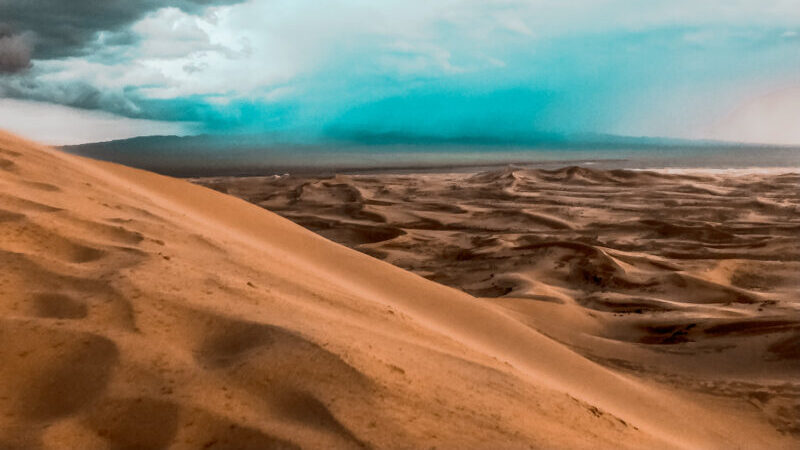
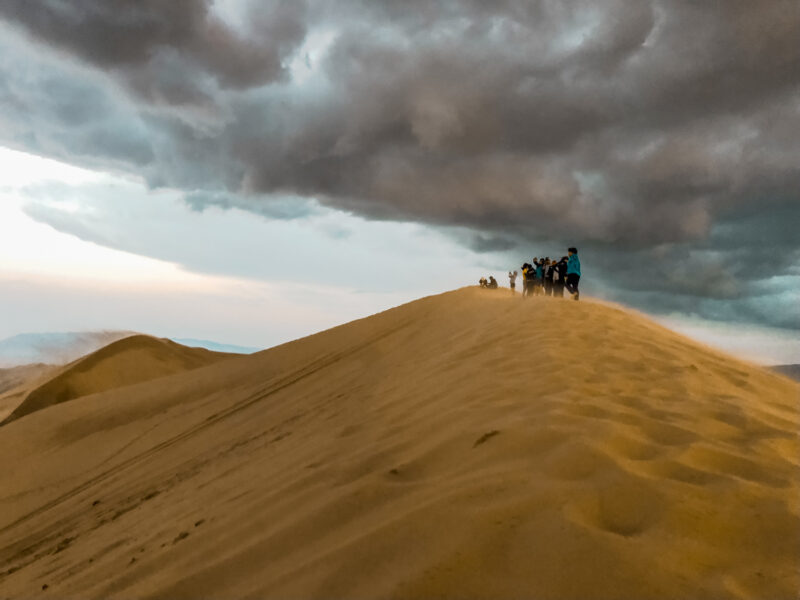
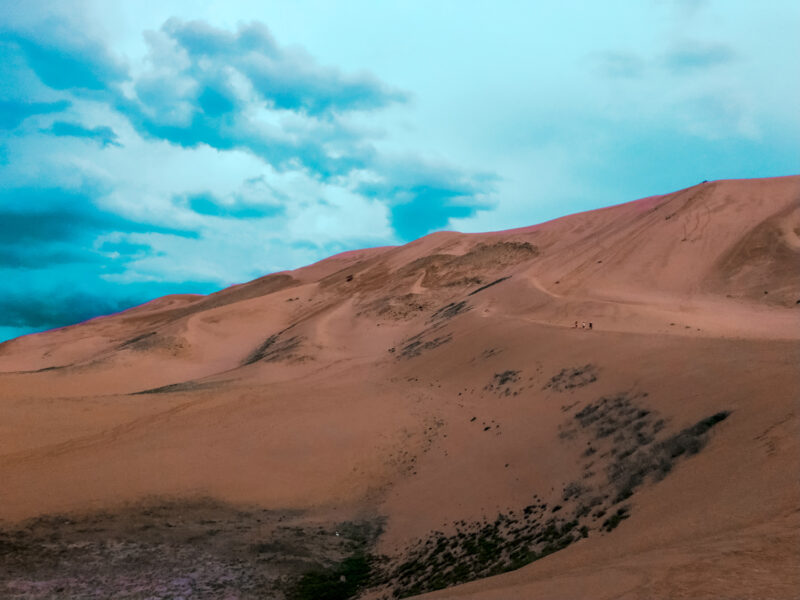
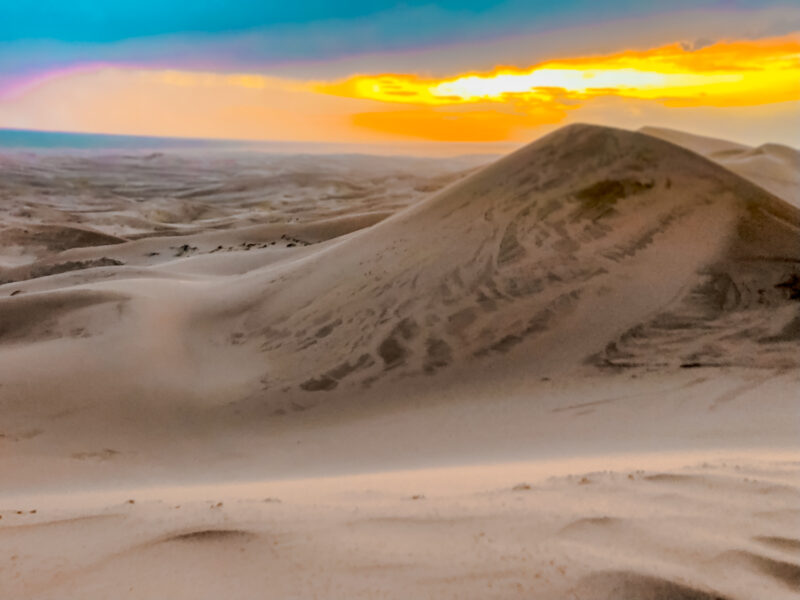
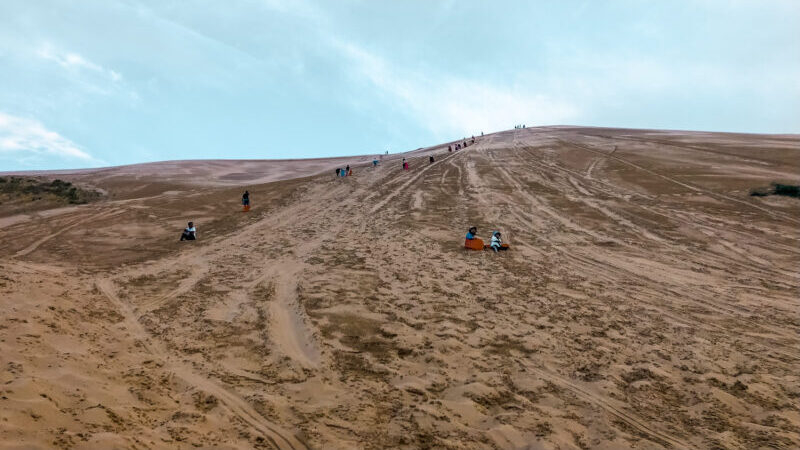
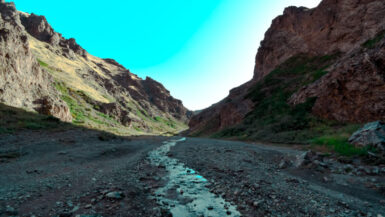
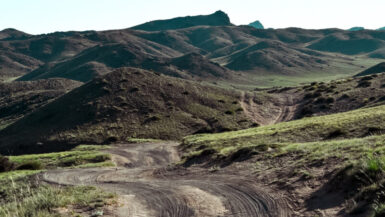

[…] Hiking the Khongor Sand Dunes […]
[…] Valley is interesting as it is part of the Gobi province, which is most famous for the Sand Dunes. This hike takes visitors through another aspect of the Gobi: the mountains. Providing a stark […]